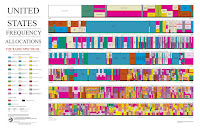On April 17, CTIA publicly released a report by the Brattle Group, "How Much Licensed Spectrum is Needed to Meet Future Demands for Network Capacity?" This interesting report, which is worth reading in full, presents a scenario regarding macro cellular wireless networks that Congress and federal agencies ought to take very seriously:
We find that if no new spectrum bands are allocated for terrestrial mobile use in the next 5 years, then the U.S. is expected to have a capacity deficit of roughly 10 exabytes per month and a spectrum deficit of roughly 400 megahertz. In ten years, without new mobile spectrum, the capacity deficit will increase to almost 17 exabytes per month and the spectrum deficit will more than triple to approximately 1,400 megahertz.
The Brattle Group's report includes a brief overview analysis of why, in their view, possible technical solutions to reduce or avoid such a spectrum deficit, including Wi-Fi offloading, increased spectral efficiency, and construction of more physical facilities such as towers and small cells will be inadequate means to accommodate growing mobile data traffic demand. Indeed, the report includes the Brattle Group's projection that mobile data traffic in North America will increase from 5,846 petabytes (PB) per month in 2022 to 33,918 PB per month in 2032.
The report's prescription for more commercial licensed spectrum availability is spot on. On the same day of the report's release, the Free State Foundation filed public comments with the NTIA for its Development of a National Spectrum Strategy proceeding. Those comments called attention to the empty spectrum pipeline and called for the repurposing of at least 1,500 MHz of mid-band spectrum for licensed commercial use.




